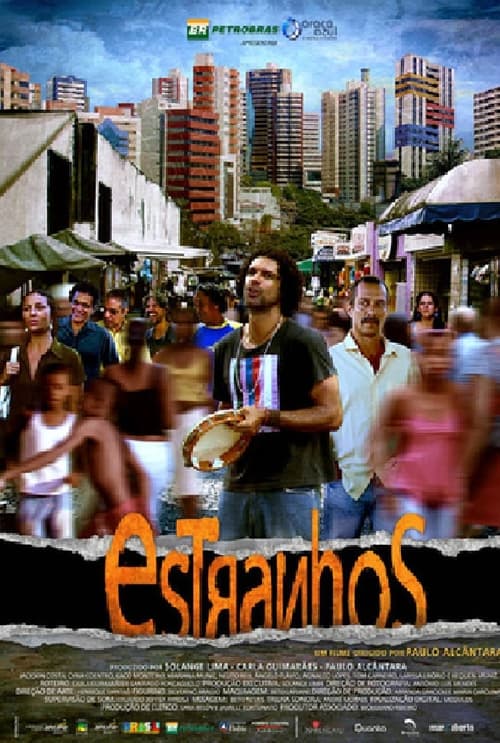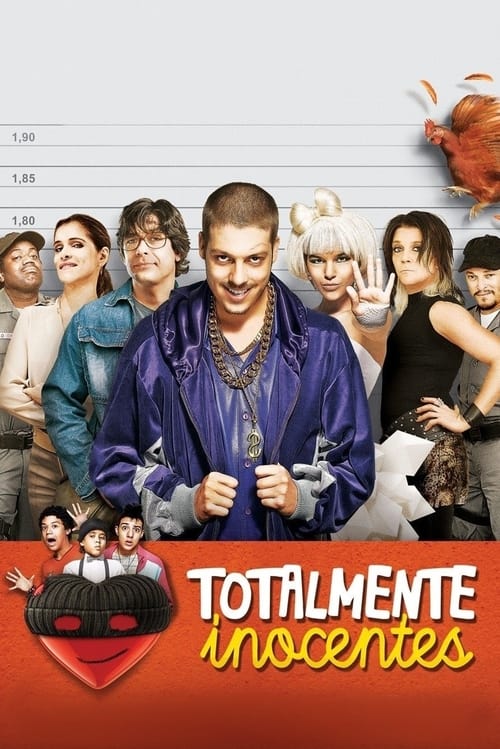
Ask Your Own Question
What is the plot?
What is the ending?
In the ending of "5x Favela, Now by Ourselves," the stories of the five different characters culminate in a reflection of their struggles and realities in the favelas of Rio de Janeiro. Each narrative concludes with a sense of unresolved tension, highlighting the ongoing challenges faced by the residents. The characters confront their circumstances, revealing their hopes and despair, ultimately leaving the audience with a poignant understanding of life in the favelas.
As the film approaches its conclusion, the narrative shifts between the five distinct stories, each reflecting the harsh realities of life in the favelas.
In the first story, we revisit the character who has been grappling with the consequences of his choices. He stands at a crossroads, contemplating his future. The weight of his past decisions hangs heavily on him, and as he looks out over the sprawling city, a mix of hope and resignation fills his heart. He understands that change is necessary, but the path forward is fraught with uncertainty.
The second story focuses on a young woman who has been striving for a better life. In the final scenes, she faces a critical moment where she must choose between staying in the favela or pursuing an opportunity that could lead her away from the struggles she knows too well. As she stands at the threshold of her home, the sounds of the favela echo around her, a reminder of her roots. Her eyes reflect determination, but also fear of the unknown. Ultimately, she decides to take the leap, symbolizing hope for a brighter future.
The third narrative centers on a group of friends who have been navigating the complexities of loyalty and survival. In the climax of their story, they confront a rival gang, leading to a tense standoff. The air is thick with tension as they weigh their options. In a moment of clarity, one of the friends steps forward, advocating for peace rather than violence. This pivotal choice leads to a fragile truce, showcasing the possibility of change even in the most dire circumstances.
The fourth story follows a father struggling to provide for his family. As the film nears its end, he faces a heartbreaking decision when he learns that his job is at risk. The emotional turmoil is palpable as he wrestles with the fear of failing his children. In a poignant scene, he gathers his family around the dinner table, sharing a meal filled with love but overshadowed by uncertainty. The scene closes with him vowing to fight for their future, embodying the resilience of the human spirit.
Finally, the fifth narrative brings us to an elderly woman who has witnessed the evolution of the favela over decades. In her closing moments, she reflects on the changes she has seen, both good and bad. As she gazes out of her window, she sees the younger generation filled with dreams and aspirations. Her heart swells with pride, yet she knows the challenges they will face. The film ends with her whispering a prayer for them, a testament to the enduring hope that persists despite the struggles.
As the screen fades to black, the audience is left with a profound sense of the complexities of life in the favelas. Each character's fate is intertwined with the broader narrative of resilience, hope, and the relentless pursuit of a better life amidst adversity. The film closes, leaving viewers to ponder the realities of those living in the favelas, their dreams, and the ongoing fight against the odds.
Is there a post-credit scene?
The film "5x Favela, Now by Ourselves" does not contain a post-credit scene. The movie concludes its narrative without any additional scenes or content after the credits roll. The focus remains on the five distinct stories that portray life in the favelas of Rio de Janeiro, each directed by different filmmakers, showcasing the struggles, dreams, and realities of the residents. The film ends on a note that emphasizes the resilience and complexity of life in these communities, leaving the audience to reflect on the stories presented.
What are the main stories told in the five segments of 5x Favela, Now by Ourselves?
The film consists of five distinct segments, each directed by different filmmakers from the favelas of Rio de Janeiro. The stories include: 'The Last Stop' which follows a young man who dreams of escaping the favela; 'The Man Who Knew Too Much' that explores the consequences of a crime; 'The Boy Who Was a King' focusing on a child who becomes a local hero; 'The Woman Who Wasn't There' which tells the story of a woman dealing with loss; and 'The Man Who Wasn't There' that portrays a man reflecting on his life choices.
How does the character of the young man in 'The Last Stop' evolve throughout his story?
In 'The Last Stop', the young man starts as a hopeful dreamer, yearning for a life beyond the confines of the favela. As the story unfolds, he faces harsh realities and temptations that challenge his aspirations. His internal conflict intensifies as he grapples with the allure of crime versus the desire for a better future, ultimately leading to a poignant realization about his identity and the environment he wishes to escape.
What motivates the protagonist in 'The Boy Who Was a King' to take action?
In 'The Boy Who Was a King', the protagonist is motivated by a deep sense of injustice and the desire to protect his community. He witnesses the struggles of his friends and family, which ignites a fierce determination within him to stand up against the challenges posed by gang violence and poverty. His journey is marked by moments of bravery and vulnerability, as he seeks to inspire others and create change.
What is the significance of the woman in 'The Woman Who Wasn't There' and her emotional journey?
In 'The Woman Who Wasn't There', the protagonist's emotional journey is deeply tied to her experiences of loss and grief. She navigates the pain of losing a loved one to violence, which shapes her perspective on life in the favela. Her story highlights the struggle to find hope amidst despair, as she seeks solace and meaning in her memories, ultimately leading her to confront her past and the reality of her surroundings.
How does 'The Man Who Knew Too Much' illustrate the consequences of crime in the favela?
In 'The Man Who Knew Too Much', the narrative centers around a character who becomes entangled in a web of crime after witnessing a violent act. His initial fear and desire to remain uninvolved quickly transform into a gripping tale of survival as he grapples with the moral implications of his knowledge. The story vividly portrays the dangers of living in a favela where crime is pervasive, showcasing the psychological toll it takes on individuals and the community.
Is this family friendly?
"5x Favela, Now by Ourselves" is a film that presents a raw and unfiltered look at life in the favelas of Rio de Janeiro, told through five different stories by five different directors. While it offers valuable insights into the realities faced by residents, it contains several elements that may not be suitable for children or sensitive viewers.
-
Violence: The film depicts various forms of violence, including gang conflicts and police brutality, which are integral to the narratives and reflect the harsh realities of favela life.
-
Drug Use: There are scenes that portray drug use and the drug trade, which are prevalent themes in the stories.
-
Language: The dialogue includes strong language and profanity, which may be inappropriate for younger audiences.
-
Poverty and Despair: The film explores themes of poverty, hopelessness, and social inequality, which can be emotionally heavy and distressing.
-
Sexual Content: Some stories include references to sexual situations or suggestive themes that may not be suitable for children.
These elements contribute to the film's authenticity but may be upsetting for younger viewers or those sensitive to such topics.































